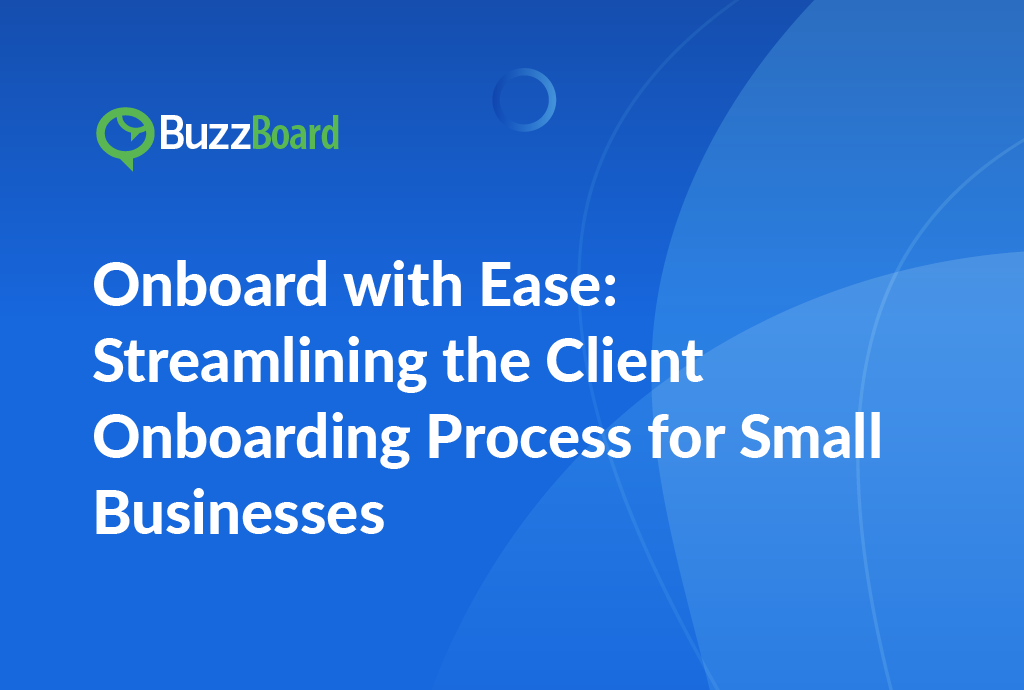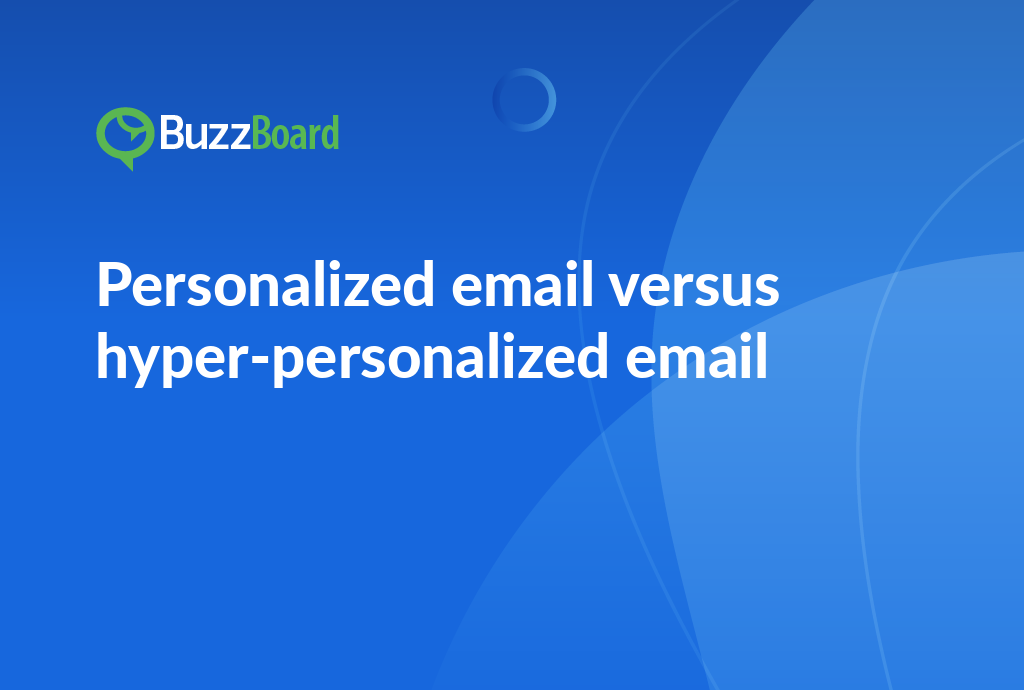Onboarding Small Business Marketing Clients
Streamline your client onboarding process with BuzzBoard’s easy-to-follow guide. Learn how to simplify the process for small businesses, reducing paperwork and increasing client satisfaction. Discover the benefits of a streamlined onboarding process, including improved communication, increased efficiency, and enhanced client relationships. Get started today and take your business to the next level!
Successful Onboarding – the Key to Building Strong Relationships
Understanding the client onboarding process is key to building strong relationships with small business marketing clients. It begins with an effective client intake process, which, when carried out correctly, can significantly improve customer satisfaction and retention. This process gathers, organizes, and evaluates vital information from new clients. By streamlining this process, a seamless transition is ensured and trust is fostered early on.
Establishing clear expectations with marketing clients can significantly influence the success of your relationship. As salespeople, it’s vital to elucidate what clients should anticipate in terms of campaign results, communication, and overall engagement. Defining the scope of work, setting achievable performance metrics, and discussing the level of involvement can simplify the process and enhance the client’s experience.
Integral to this client journey is a robust communication plan for marketing clients. Regular updates, feedback sessions, and quick resolutions of concerns can boost client relationships and extend their lifespan. A plan should encompass the frequency and method of communication, designated personnel for customer inquiries, and guidance for troubleshooting.
With these strategies for onboarding small business marketing clients, agencies can avert potential misunderstandings, create an advantageous impression, and foster a long-term, mutually beneficial relationship. These resources ensure a productive dialogue right from the start.
Essential Elements in Setting up an Effective Client Intake Process for Small Businesses
In the competitive realm of business, establishing an effective client intake process is crucial, particularly for small businesses. One key aspect where many entities stumble involves onboarding marketing clients.
For a successful client intake process, begin by setting up clear communication channels. A solid communication plan gives marketing clients a roadmap for routine touchpoints and preemptive engagement. Besides keeping dialogues focused, this step shapes the tone of the entire business relationship.
Another essential component is setting expectations with marketing clients. Explicitly stating goals, deliverables, timelines, and responsibilities from the get-go paves the path to smooth cooperation and minimizes misunderstandings or disputes.
Importantly, do not overlook client interviews. Direct dialogues offer priceless insights into the clients’ needs, preferences, and initiatives, thereby supplying the tools needed to tailor your approach and strategies.
Additionally, adopt an efficient Customer Relationship Management (CRM) system. This tool centralizes client information while enhancing visibility and coordinating internal workflows.
Try these additional tips for onboarding small business marketing clients:
Remember, the primary objective is to produce a positive experience that builds trust and fosters long-term partnerships.
Helpful Tips for Setting Expectations with Marketing Clients During the Onboarding Process
Sales representatives at digital marketing agencies can face challenges in onboarding small business marketing clients. This process involves a range of tasks, from crafting strategies to setting up tools. However, a few key principles can streamline the client intake process, facilitate expectation setting, and enable a top-tier communication plan.
Foremost, it’s essential to be transparent. Honesty fosters trust, a cornerstone of any successful business relationship. Make certain your clients understand upfront what they can expect in terms of budgets, timelines, efforts, and potential outcomes.
Setting realistic goals is the next important step. Goals should be Specific, Measurable, Achievable, Relevant, and Time-Bound (SMART). Bear in mind, transparency is equally indispensable here, as overpromising and underdelivering can tarnish your firm’s reputation over time.
Effective communication is crucial as well. Continuous, open-ended conversations can prevent miscommunication and strengthen relationships. Devise a communication plan for your marketing clients that outlines when and how you’ll share updates, progress, and results.
Additionally, ensure your clients have access to the necessary tools. They should be well-informed about the tools and technology that will be used to implement their marketing strategies, instilling a sense of ownership and involvement.
Lastly, remember each client is unique and requires a tailored approach.
The Importance of a Communication Plan For Marketing Clients and How to Establish It
As salespeople at digital marketing agencies, it’s crucial to have a comprehensive communication plan for the successful onboarding of small business marketing clients. This plan often revolves around the client intake process, which serves as an initial interaction with potential clients. It’s not just a tool for gaining trust and obtaining vital information, but also for tailoring your marketing services to match the client’s specific needs.
A strategic communication plan clearly emphasizes the need for setting expectations at the outset. By facilitating transparency, defining roles accurately, and explaining the process and deliverables, it significantly reduces the risk of future misunderstandings. Creating clear and precise definitions of what a client can expect can be a game-changer in the success or failure of client-agency relationships.
Creating a communication plan for marketing clients is more than just sketching out the workflow or providing regular client updates. It involves cultivating an open channel that readily accepts creative ideas, feedback, and criticism in a two-way flow. The ultimate aim is to create a long-lasting, collaborative relationship, where the client feels valued and empowered, while your agency consistently delivers excellent service.
In summary, constructing a communication plan is a strategic move that ensures a seamless onboarding of small business marketing clients. This is an invaluable investment that reaps great rewards in terms of client retention and solidifying a strong reputation in the highly competitive digital marketing landscape.
For more information on how to develop an effective communication plan, we encourage you to navigate through our wealth of useful resources and tips to augment your agency’s client management process.
Real-Life Examples of Successful Application of These Tips in Improving Client Onboarding Process in Small Businesses
In the digital marketing sphere, client onboarding is as vital as the provided services, particularly for small businesses. For long-term success, perfecting this process is crucial, and we have some tips to enhance your client onboarding and associated processes.
For instance, cloud-based accounting solution FreshBooks considers a robust client intake process to be pivotal to their success. CEO Mike Mcderment discusses the significance of a fast yet thorough client intake process to increase client retention.
Creating clear expectations with marketing clients is also critical. A study by HubSpot demonstrated a significant increase of 20% in revenue over five months when they implemented their “Client Service Code,” outlining what clients could anticipate from the company. This strategy significantly improved client satisfaction and onboarding.
Effective communication plans for marketing clients is yet another contributing factor. Email marketing platform MailChimp offers an excellent model of this strategy. From the very beginning, their goal has been to cultivate continuous and transparent communication with their clients, leading to stronger client relationships and boosted retention.








